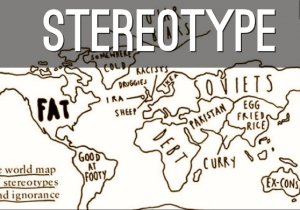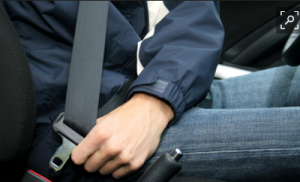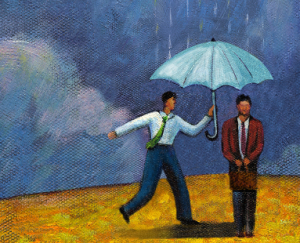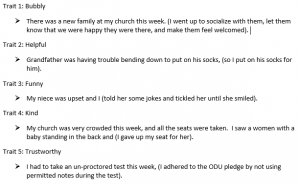Artifact 5 (Module 8 Archive):
For this task I was asked to stereotype different ethnicities and then compare my answers to Katz & Bradly, and Gilbert. I believe this artifact was a good representation of a big portion of what I learned in this course. Throughout the course the book discussed different stereotypical behaviors, and sometimes compared them to different countries. I loved that the book discussed the differences, because what may be an expected behavior in America to a situation, may not be the expected behavior in another country. This artifact also went into the stereotypes associated with different countries throughout time. For this class, the book also discussed on several accounts the changes in social society over time. This as well is of great importance, what may have been socially acceptable in the 50’s, may not be acceptable in todays society. This artifact also showed ethnic stereotyping, and that like the book states, the ethnicity of the rater also effects the way they rate others.

Artifact 4 (Module 7 Archive: “Attitude Survey”):
This artifact aided me in truly understanding how common cognitive dissonance is. Just reading about the topic, I told myself that I barely, if even at all exhibit cognitive dissonance. After doing this artifact, I realized in fact I do exhibit a lot of cognitive dissonance. There were several other topics discussed through this course that I automatically wanted to believe didn’t apply to me. After doing this artifact I tried to really think about how in fact these social behaviors did apply to me. Via this artifact I realized when friends and family, and myself notice cognitive dissonance, we normally want to restore the balance, because we want to be in the right, and not contradict our own beliefs and be hypocritical. However, sometimes we cannot restore balance, because we may not be able to exhibit a certain attitude or behavior, and then we reconsider our stance on the topic and sometimes switch our belief to match our attitude.

Artifact 3 (Module 11 Archive: “Are People Who Help Happier”):
Chapter 9, was very interesting to me, as well as the artifact that went along with it. For this artifact I listed ten people and whether I believed they are happy or not, and if they are selfish or unselfish. My findings indicated that those who are unselfish are normally happier. This result goes to prove one of my favorite quotes “Happiness is only real, when shared.” -Into the Wild. This artifact was well representative of the concept that our social behaviors effect our psychological behaviors and well being. This class goes into sociology and psychology, and this chapter and artifact was an excellent example of how the two effect one another. This coincides with the theme of social psychology, in that our interactions with others effect our mental state, and our mental state impacts our interactions with others. Theories of altruism are constantly being tested by professionals, which also covers the objective of research. Filling out this artifact made me realize how much, not only being a happy person increases your likelihood to preform kind acts, but how much preforming kind acts increases your happiness.

Artifact 2 (Module 6 Archive: “The Self Across Situations”):
For this artifact I listed 5 character traits which I believe I display. I then listed 5 situations that took place that week, where I exhibited the character traits listed. This artifact encouraged me to inspect my personality and find my true underlying character traits. Applying my character traits to everyday situations helped me realize how often, and without much effort my personality traits come out in typical situations. This made me also realize that I sometimes fall back to certain characteristics when I am in unsure situations, such as when I am a little nervous I tend to push myself to be bubbly. I think this artifact assignment showcases what this class is about, which is, how our individual psychological makeups coexist or effect/effected by society.
 Artifact 1 (Module 10 Archive: “Norm Violation Exercise”):
Artifact 1 (Module 10 Archive: “Norm Violation Exercise”):
For this artifact I was asked to violate a social norm. For my disruption of social norms I started doing sit-ups in the middle of Target. I got many looks from people passing by, and laughs. One man came up to me and laughed, asking if this was my personal gym. This artifact showed the impact that social norms have on our social behaviors. If no one else was in Target, doing sit-ups wouldn’t feel as strange. However, knowing that people were there and could see me doing this unusual behavior for that environment, made me extremely uncomfortable. As we learned throughout this course our behaviors, whether having to do with ethnicity, or gender, are greatly impacted by social expectations.
